Serum vitamin C levels modulate the lifespan and endoplasmic reticulum stress response pathways in mice synthesizing a nonfunctional mutant WRN protein
- PMID: 29452565
- PMCID: PMC5998970
- DOI: 10.1096/fj.201701176R
Serum vitamin C levels modulate the lifespan and endoplasmic reticulum stress response pathways in mice synthesizing a nonfunctional mutant WRN protein
Abstract
Werner syndrome (WS) is a premature aging disorder caused by mutations in a RecQ-family DNA helicase (WRN). Mice lacking part of the helicase domain of the WRN ortholog exhibit several phenotypic features of WS. In this study, we generated a Wrn mutant line that, like humans, relies entirely on dietary sources of vitamin C (ascorbate) to survive, by crossing them to mice that lack the gulonolactone oxidase enzyme required for ascorbate synthesis. In the presence of 0.01% ascorbate (w/v) in drinking water, double-mutant mice exhibited a severe reduction in lifespan, small size, sterility, osteopenia, and metabolic profiles different from wild-type (WT) mice. Although increasing the dose of ascorbate to 0.4% improved dramatically the phenotypes of double-mutant mice, the metabolic and cytokine profiles were different from age-matched WT mice. Finally, double-mutant mice treated with 0.01% ascorbate revealed a permanent activation of all the 3 branches of the ER stress response pathways due to a severe chronic oxidative stress in the ER compartment. In addition, markers associated with the ubiquitin-proteasome-dependent ER-associated degradation pathway were increased. Augmenting the dose of ascorbate reversed the activation of this pathway to WT levels rendering this pathway a potential therapeutic target in WS.-Aumailley, L., Dubois, M. J., Brennan, T. A., Garand, C., Paquet, E. R., Pignolo, R. J., Marette, A., Lebel, M. Serum vitamin C levels modulate the lifespan and endoplasmic reticulum stress response pathways in mice synthesizing a nonfunctional mutant WRN protein.
Keywords: Werner syndrome; aging; ascorbate; gulonolactone oxidase; metabolomic.
Conflict of interest statement
This work was supported by funding from the Canadian Institutes of Health Research (to M.L. and A.M.), and by U.S. National Institutes of Health (NIH) National Institute on Aging Grant R01AG028873 (to R.J.P.). L.A. is a scholar from the Fondation du Centre Hospitalier Universitaire de Québec. The authors declare no conflicts of interest.
Figures

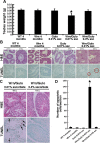
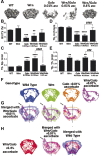
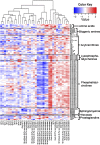
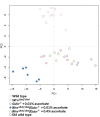


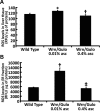


Similar articles
-
Vitamin C alters the amount of specific endoplasmic reticulum associated proteins involved in lipid metabolism in the liver of mice synthesizing a nonfunctional Werner syndrome (Wrn) mutant protein.PLoS One. 2018 Mar 1;13(3):e0193170. doi: 10.1371/journal.pone.0193170. eCollection 2018. PLoS One. 2018. PMID: 29494634 Free PMC article.
-
Impact of vitamin C on the cardiometabolic and inflammatory profiles of mice lacking a functional Werner syndrome protein helicase.Exp Gerontol. 2015 Dec;72:192-203. doi: 10.1016/j.exger.2015.10.012. Epub 2015 Oct 29. Exp Gerontol. 2015. PMID: 26521679
-
Nonfunctional mutant Wrn protein leads to neurological deficits, neuronal stress, microglial alteration, and immune imbalance in a mouse model of Werner syndrome.Brain Behav Immun. 2018 Oct;73:450-469. doi: 10.1016/j.bbi.2018.06.007. Epub 2018 Jun 15. Brain Behav Immun. 2018. PMID: 29908963
-
Ascorbate improves metabolic abnormalities in Wrn mutant mice but not the free radical scavenger catechin.Ann N Y Acad Sci. 2010 Jun;1197:40-4. doi: 10.1111/j.1749-6632.2010.05189.x. Ann N Y Acad Sci. 2010. PMID: 20536831 Free PMC article. Review.
-
The Impact of Vitamin C on Different System Models of Werner Syndrome.Antioxid Redox Signal. 2021 Apr 10;34(11):856-874. doi: 10.1089/ars.2020.8147. Epub 2020 Nov 17. Antioxid Redox Signal. 2021. PMID: 33202145 Review.
Cited by
-
Campomanesia adamantium O Berg. fruit, native to Brazil, can protect against oxidative stress and promote longevity.PLoS One. 2023 Nov 16;18(11):e0294316. doi: 10.1371/journal.pone.0294316. eCollection 2023. PLoS One. 2023. PMID: 37972127 Free PMC article.
-
Calcification in Werner syndrome associated with lymphatic vessels aging.Aging (Albany NY). 2021 Dec 27;13(24):25717-25728. doi: 10.18632/aging.203789. Epub 2021 Dec 27. Aging (Albany NY). 2021. PMID: 34958633 Free PMC article.
-
COPB2 loss of function causes a coatopathy with osteoporosis and developmental delay.Am J Hum Genet. 2021 Sep 2;108(9):1710-1724. doi: 10.1016/j.ajhg.2021.08.002. Epub 2021 Aug 26. Am J Hum Genet. 2021. PMID: 34450031 Free PMC article.
-
Effects of Letrozole Treatment and Vitamin C Supplementation on Morphology, Endoplasmic Reticulum Stress, Programmed Cell Death, and Oxidative Stress in the Small Intestine of Adult Male Rats.Curr Issues Mol Biol. 2024 Mar 1;46(3):1943-1954. doi: 10.3390/cimb46030127. Curr Issues Mol Biol. 2024. PMID: 38534743 Free PMC article.
References
-
- Epstein C. J., Martin G. M., Schultz A. L., Motulsky A. G. (1966) Werner’s syndrome a review of its symptomatology, natural history, pathologic features, genetics and relationship to the natural aging process. Medicine (Baltimore) 45, 177–221 https://doi.org/10.1097/00005792-196605000-00001 - DOI - PubMed
-
- Salk D. (1982) Werner’s syndrome: a review of recent research with an analysis of connective tissue metabolism, growth control of cultured cells, and chromosomal aberrations. Hum. Genet. 62, 1–5 https://doi.org/10.1007/BF00295598 - DOI - PubMed
-
- Yu C. E., Oshima J., Fu Y. H., Wijsman E. M., Hisama F., Alisch R., Matthews S., Nakura J., Miki T., Ouais S., Martin G. M., Mulligan J., Schellenberg G. D. (1996) Positional cloning of the Werner’s syndrome gene. Science 272, 258–262 https://doi.org/10.1126/science.272.5259.258 - DOI - PubMed
-
- Ozgenc A., Loeb L. A. (2005) Current advances in unraveling the function of the Werner syndrome protein. Mutat. Res. 577, 237–251 https://doi.org/10.1016/j.mrfmmm.2005.03.020 - DOI - PubMed
-
- Balajee A. S., Machwe A., May A., Gray M. D., Oshima J., Martin G. M., Nehlin J. O., Brosh R., Orren D. K., Bohr V. A. (1999) The Werner syndrome protein is involved in RNA polymerase II transcription. Mol. Biol. Cell 10, 2655–2668 https://doi.org/10.1091/mbc.10.8.2655 - DOI - PMC - PubMed
Publication types
MeSH terms
Substances
Grants and funding
LinkOut - more resources
Full Text Sources
Other Literature Sources
Medical
Molecular Biology Databases

